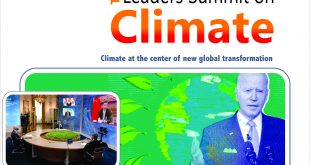‘War on Terror’ in Afghanistan started by the US on 7th October 2001 under ISAF (International Security Assistance Force) umbrella is to complete twelve years soon. At this point, can we say that the Taliban stand defeated? The answer is definitely a big ‘No’.
The long-drawn conflict has taken a heavy toll of the Afghans’ lives as cost on their side while the ISAF has also lost 3218 soldiers so far and suffered a huge loss of precious hardware. The Afghan tenacity against alien presence on their soil has thwarted the allies’ triumphant return. President Obama correctly foresaw the outcome i.e. no prospects for a decisive victory and announced withdrawal of US troops by the end of 2014. The allies are also going to follow the lead.
As preparations for US drawdown are on, the emerging scenario seems scaring. Return of normalcy in Afghanistan is in Pakistan’s interest and hence, the government freed a number of Taliban bigwigs in 2012 to woo the Taliban to the negotiating table. Unfortunately, the process has been stalled since then and there is a stalemate because US focuses on Taliban’s renouncing the violence, expulsion of Al-Qaeda remnants and acceptance of constitutional rule while the Taliban demand ISAF’s complete withdrawal that is in conflict with US’s strategic objectives of deterring Al Qaeda’s resurgence and formidable presence in Afghanistan even after 2014.
Scepticism dominates the scene because of convergence of the conflicting demands of both parties. On the possibility of failure to reach a negotiated settlement, Muhammad Amir Rana writes is his article:
‘The post-2014 scenario appears no better as there is increased risk of insecurity and violence in both countries.’
For Pakistan, failure of dialogue means increased insurgency, and Afghanistan becoming a terrorists’ sanctuary.
The Pushtuns make 42% of Afghanistan’s population. Given their history if there is no external force to fight, they may engage themselves in feuds for personal and tribal gains. As democracy has yet to take roots, departure of allied troops is likely to ignite inter-tribe strife and fighting for dominance of the warlords as observed in the 90s.
The Afghan National Army (ANA) with its 195,000 troops is yet to become a coherent fighting force. At present, ANA’s operations are bolstered by the ISAF; its efficacy to plan and execute missions independently, and success thereof is yet to be tested. Latest reports suggest that the Tajiks make 41% of ANA against their population of 27%. Ethnic balance in rank and file along with the elimination of racial divide is the only way to enable it to face daunting the Taliban challenge.
It sounds odd that the Tajiks suspect Pushtuns’ loyalty and consider them sympathetic to Taliban. Pushtun’ Tajik dissent is already there; the ethic divide between the two groups is so wide that possibility of armed conflict between them cannot be ruled out. Mason writes, ‘I believe the elements of civil war are in play;’ and Mr Ho says that a civil war between the Pushtuns and Tajk-led alliance of ethnic groups has already begun but it could get much worse.
The Pak-Afghan border is porous. The tribes on both sides of the boundary have deep kinship. They speak one language and share same traditions and culture. Their movements across the frontier have been without any restriction during colonial rule and afterwards.
In an unfortunate scenario of Afghanistan’s bifurcation, the Durand Line will become irrelevant. On the said presumed development Thomas Barfield wrote:
‘Such a scenario would inevitably destabilize Pakistan’s Pashtun-majority regions.’
Has Pakistan space to pressurize Taliban and does it hold the key to peace? ‘No’ is the terse answer. In other words, the doctrine of strategic depth is forlorn; the only option with Pakistan is to be vigilant with cognizance to stability concerns linked with post-2014 Afghanistan. Is Pakistan prepared to face the emerging situation in Afghanistan? Probably not.
Pakistan supports intra-Afghan dialogue as a preferred option before the US and allies leave the country. Pakistan’s new government will have to work on mending the relationship with Kabul to prepare for the post-2014 scenario.
It is high time for Pakistan to define its strategic objectives vis-Ã -vis stakes of other regional states and concerns of the international community in respect of militants’ hideouts on its soil.
 Jahangir's World Times First Comprehensive Magazine for students/teachers of competitive exams and general readers as well.
Jahangir's World Times First Comprehensive Magazine for students/teachers of competitive exams and general readers as well.


